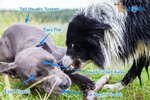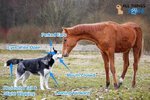Z
Zetaman40
Guest
I noticed there isn't a thread about this yet from what I saw, and I feel its important for all pet owners to know this stuff to better understand how dogs communicate! Here's a pretty descriptive and accurate representation on k9 body language with real life examples!
Playful stance: A dog in this stance is excited and wants to play
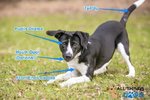
Submissive-Relaxed: A dog in this stance is content and wants attention so long as its not accompanied by any negative body language (I'll go into greater detail further in the thread)
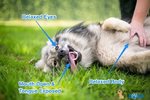
Fearful or unsure: a dog in this stance is trying to say he/she's uncomfortable with something, a lowered body and head are definite signs of fear or anxiety
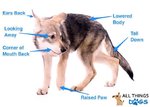
Playful stance: A dog in this stance is excited and wants to play

Submissive-Relaxed: A dog in this stance is content and wants attention so long as its not accompanied by any negative body language (I'll go into greater detail further in the thread)

Fearful or unsure: a dog in this stance is trying to say he/she's uncomfortable with something, a lowered body and head are definite signs of fear or anxiety

Last edited by a moderator:



